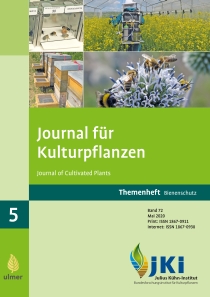Non-<em>Apis</em> bees as model organisms in laboratory, semi-field and field experiments
DOI:
https://doi.org/10.5073/JfK.2020.05.06Keywords:
honey bee, bumble bees, solitary bees, ecotoxicology, risk assessment, sensitivity, method developmentAbstract
As part of the registration process of plant protection products (PPPs) and their active substances in the EU, the risk of PPPs for bees has been assessed so far by using the European honey bee (Apis mellifera L.) as a surrogate species. In the past few years other bee species have been discussed to augment data on honey bees. The addition of bee species in the registration process goes along with adapting test methodologies to new bee species and understanding how to use these species at different tiers (laboratory, semi-field and field levels). Here we first discuss the importance of bees as test organisms, outline the current state of research relevant to the methodology and design of experiments with bees and highlight recent activities in the standardization of test procedures.
Published
Issue
Section
License
The content of the journal is licensed under the Creative Commons Attribution 4.0 License. Any user is free to share and adapt (remix, transform, build upon) the content as long as the original publication is attributed (authors, title, year, journal, issue, pages).
The copyright of the published work remains with the authors. The authors grant the Journal of Cultivated Plants, the Julius Kühn-Institut and the OpenAgrar repository the non-exclusive right to distribute and exploit the work.







